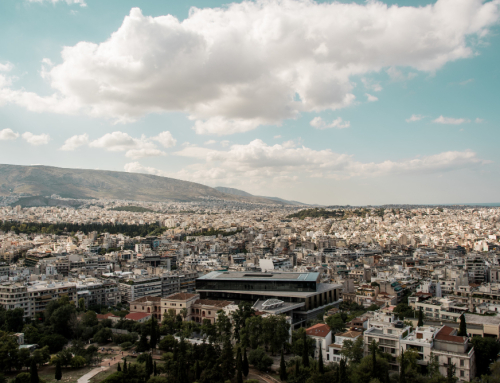In the first quarter of 2023, the sale prices of houses in Attica recorded twice the rate of growth in comparison to rents. More specifically, the increase in sales prices was 10% on an annual basis, while that of rents was of the order of 4.9%, based on the data processing of the property price index Spitogatos Property Index (SPI) of the classifieds platform.
The average asking selling price is now 2,070 euros/sq.m., while the average asking rental price is 8.6 euros/sq.m. These are numbers that make it particularly difficult to secure housing for the majority of households, without at least making very serious “discounts” in the quality, age and surface area of the respective property. In fact, as can be seen in the case of sales prices, there is an acceleration of the rate of increase compared to the fourth quarter, when the average increase was 9.35%.
It is characteristic that during this year’s first quarter, almost all individual geographical zones of Attica recorded a double-digit increase compared to the corresponding quarter last year.
Specifically, an increase of 13.2% was recorded in the southern suburbs, where the average price was 3,368 euros/sq.m. from 2,976 euros/sq.m. 12 months ago. An increase of 13.1% was also noted in the suburbs of Piraeus, which, however, remain the cheapest area of Attica, with the average asking price not exceeding 1,500 euros/sq.m. An 11.2% increase was also noted in the western suburbs (1,635 euros/sq.m.), while in the north, the average asking price is now 2,800 euros/sq.m., up 10.3% on an annual basis.
As for asking rental prices, they rose by 4.9% on average. However, the pace of growth has slowed significantly, as in the fourth quarter of 2022, three months ago, asking rental prices had increased by 8.5% year-on-year. Even so, of course, they remain at their highest point in decades, having fully recovered from the lows of 2014-2015.
For example, even in the “cheap” areas of the western suburbs or the surroundings of Piraeus (e.g. Keratsini, Kaminia, Drapetsona, etc.), the asking prices are now at a very high level of 7.46 euros/m .m. and 7 euros/sq.m. respectively.
In short, the average asking rent for an apartment of 100 sq.m. reaches 750 euros in the western districts of Attica and 700 euros in the suburbs of Piraeus. In the northern suburbs exceeds 1,000 euros, while in the center of Athens the corresponding cost is 940 euros.
The above prices are fueling concern among market players that we are facing a new wave of ‘Not paying’ as it is very easy for those who have leased at these prices to start showing inconsistency in payments due to inability to meet. But even if they are not inconsistent, they will be in a constant process of searching for cheaper options, either in the same or in a different area.
In short, some owners may have secured a very high price for their property, but maintaining this condition may prove difficult in the future.
In this context, a related research by DiaNEOsis notes that Greece now has the highest housing costs in relation to incomes. According to Eurostat, Greek households that do not live in their own home pay the largest percentage of their income for housing – around 37%. This is the largest percentage in the EU. In fact, almost one in three households living in cities pay even more, more than 40% of their income on housing – also the highest in Europe.
According to the researchers, one explanation for this development is the large reduction in incomes. From 2009 to 2014, Greeks lost more than 40% of their disposable income. To date, only a small percentage of these losses have been recovered, especially if you factor in the recent losses from inflation and the precision wave, especially in the food market.
“At the same time, tourists to the cities and islands were increasing. Landlords found new options for exploiting their properties, such as short-term leases, which in turn affected prices and rents” reports DiaNEOSis.
Source: kathimerini.gr









